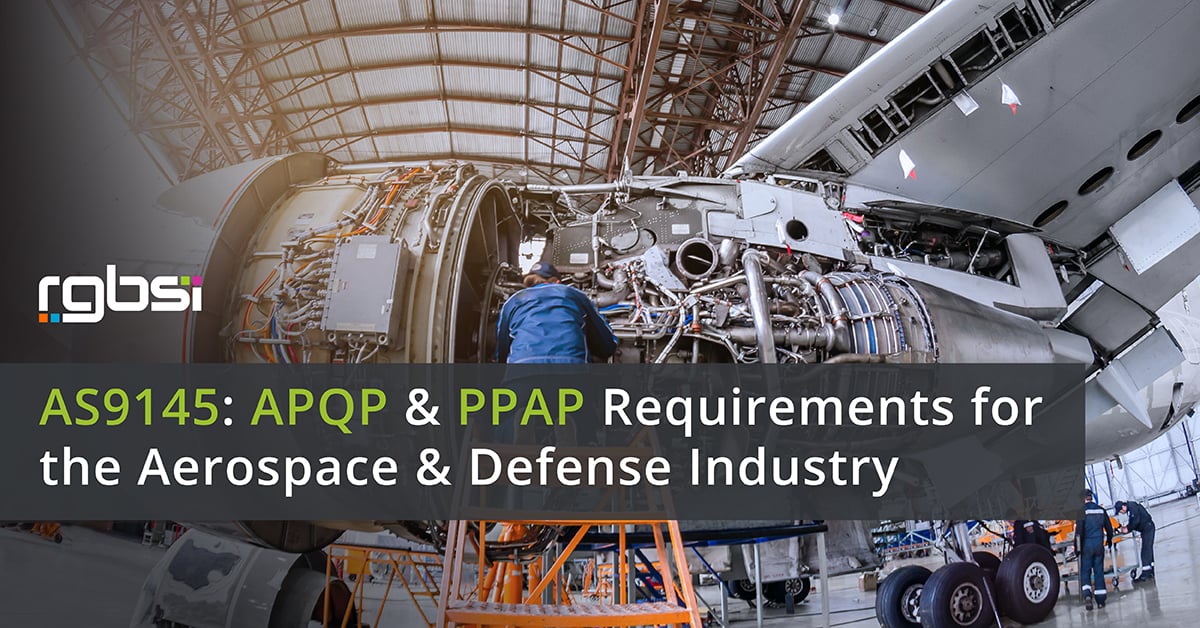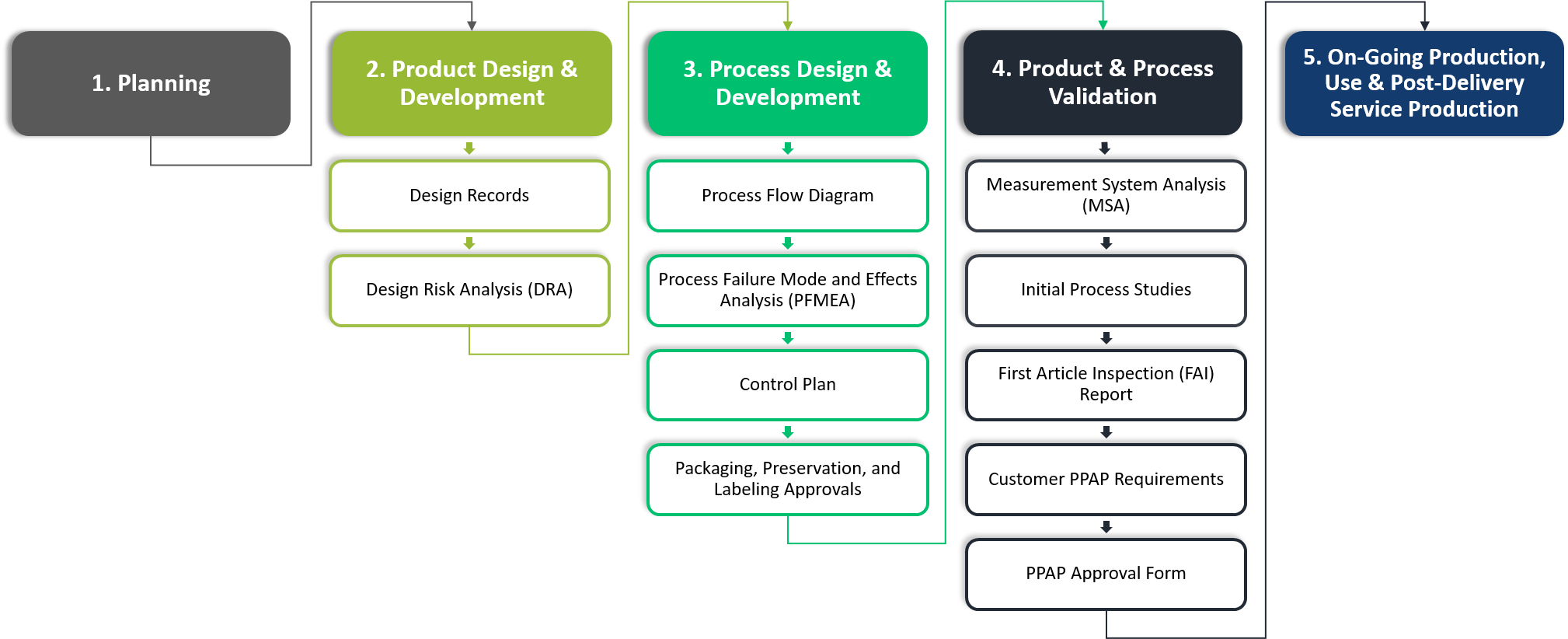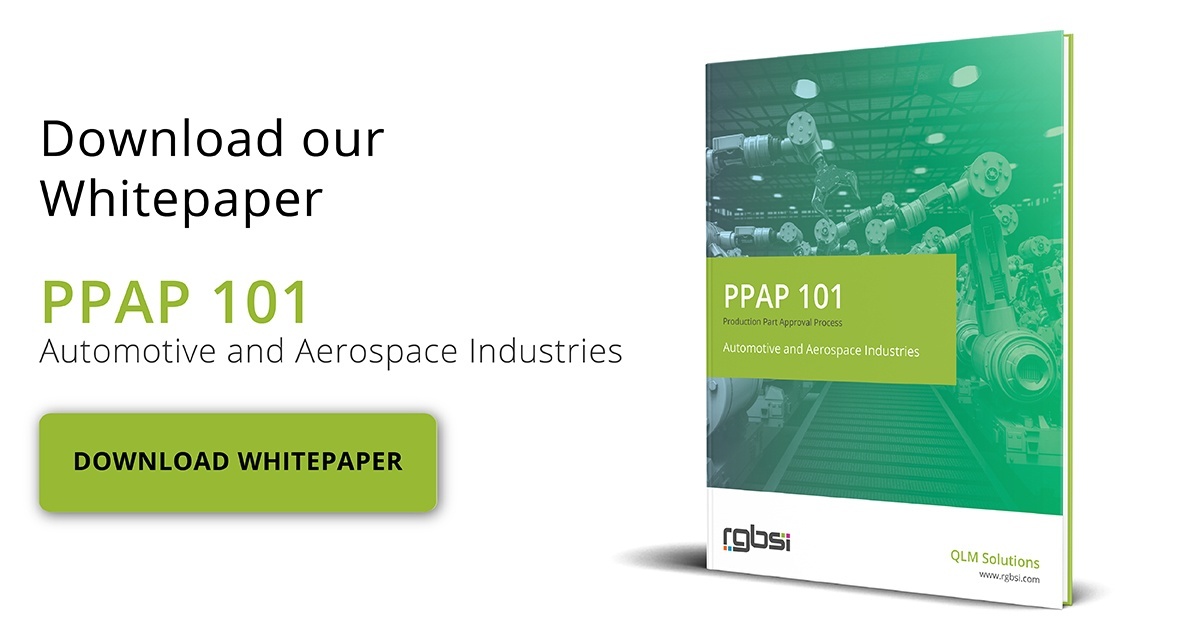
AS9145 is a standard specific to the aerospace & defense industry and applies to new product development or existing product changes. It is a structured process which includes advanced product quality planning (APQP) and production part approval process (PPAP) as part of its requirements.
The International Aerospace Quality Group (IAQG) established the AS9145 standard in response to the aggressive customer and regulatory requirements predominant in the aerospace and defense industry. Customers in this space often expect suppliers to exceed their requirements. AS9145 provides a framework for suppliers to meet these vigorous demands through best practices.
APQP is a process that happens during the product development lifecycle to facilitate transparent communication and feedback throughout the supply chain. This process allows suppliers to detect errors early on, incorporate customer feedback, and deliver high quality products. PPAP is an output of APQP. As the last step in the APQP process, PPAP demonstrates if a supplier can replicate the production of parts with consistency to a customer’s standards.
AS9145 through APQP Phases
There are 5 phases of APQP which run concurrently:
- Planning – identify project scope with consideration of time, budget, quality, and technical requirements.
- Product Design & Development – design products in accordance with requirements.
- Process Design & Development – design manufacturing processes in accordance with identified requirements and risks.
- Product & Process Validation – verify the ability of the processes to produce products at a given rate in conformance with the quality requirements.
- On-Going Production, Use & Post-Delivery Service Production – reduce variation with regular control checks, continuous improvement, and lessons learned to ensure ongoing customer satisfaction.
AS9145 defines the APQP process and articulates the elements required for the PPAP submission as an aerospace and defense industry standard. The 11 elements support new product introduction and include:
- Design Records
- Design Risk Analysis (DRA)
- Process Flow Diagram
- Process Failure Mode and Effects Analysis (PFMEA)
- Control Plan
- Packaging, Preservation, and Labeling Approvals
- Measurement System Analysis (MSA)
- Initial Process Studies
- First Article Inspection (FAI) Report
- Customer PPAP Requirements (customers can add their requirements in addition to the standard.)
- PPAP Approval Form
Aligning APQP Phases with PPAP Elements
|
APQP Phases |
PPAP Elements |
|---|---|
|
1. Planning Identify project scope with consideration of time, budget, quality, and technical requirements. |
|
| 2. Product Design & Development Design a products in accordance with requirements. |
1. Design Records |
|
2. Design Risk Analysis (DRA) |
|
|
3. Process Design & Development Design manufacturing processes in accordance with identified requirements and risks. |
3. Process Flow Diagram |
|
5. Control Plan |
|
|
6. Packaging, Preservation, and Labeling Approvals |
|
|
4. Product & Process Validation Verify the ability of the processes to produce products at a given rate in conformance with the quality requirements. |
|
|
8. Initial Process Studies |
|
|
9. First Article Inspection (FAI) Report |
|
|
10. Customer PPAP Requirements |
|
|
11. PPAP Approval Form |
|
|
5. On-going Production, Use & Post-delivery Service Production Reduce variation with regular control checks, continuous improvement, and lessons learned to ensure ongoing customer satisfaction. |
AS9145 PPAP Requirements
The AS9145 standard specifies which PPAP elements to maintain through the product development lifecycle and serves as evidence of conducting APQP. The assembling of PPAP elements occurs during APQP.

(AS9145 PPAP Requirements through APQP phases)
The generated PPAP file submission is comprised of the 11 required elements specific to the aerospace & defense industry and any additional documentation that the customer requires. The PPAP submission also includes a PPAP approval form for the customer to record its disposition. Once reviewed, the customer dispositions the PPAP form with one of the following submission statuses:
- Approved – the submission meets the PPAP and customer requirements, and the product can be shipped.
- Interim Approval – the submission does not fully meet the PPAP and customer requirements, and the product can be shipped only under customer specified conditions.
- Rejected – the submission does not meet the PPAP and customer requirements, and the product cannot be shipped.
The AS9145 standard provides advantages for aerospace & defense sectors during new product development and existing product change processes. It helps strengthens validity with early detection of defects and elimination of risks. Also, AS9145 provides structured control processes for suppliers to deliver safe, reliable products that meet customer quality requirements.
About RGBSI
At RGBSI, we deliver business solutions that close the gap between strategy and execution for global organizations of all sizes. Our portfolio of solutions spans across the verticals of workforce management, engineering, quality lifecycle management (QLM), and information technology (IT). Through strategic partnerships, we help clients enhance performance, adopt innovation, and access global resources.
About RGBSI QLM Solutions
Need support with APQP, PPAP, or the entire AS9145 standard? At RGBSI, we provide full service quality lifecycle management (QLM) solutions that optimize manufacturing supply chain initiatives. Organizations within automotive, aerospace & defense, and other engineering segments leverage our expertise to validate, manage, and assess their current processes.
Need help with your quality lifecycle management activities? Inquire.











